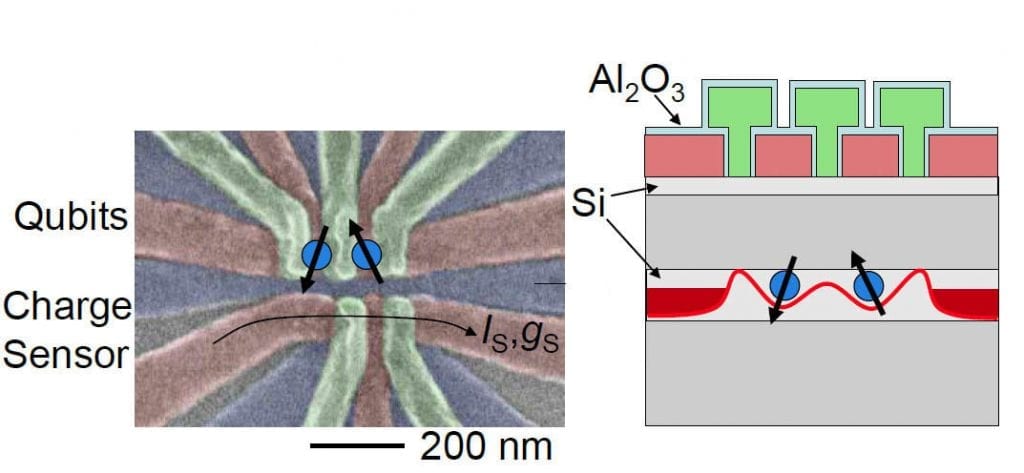This development is an important step in making a quantum computer using everyday materials. This research was led by researchers at Princeton University who built a key piece of silicon hardware capable of controlling quantum behaviour between two electrons with extreme accuracy. The study was published on Dec. 7 in the journal Science.
Creation process
The team built a gate that controls interactions between electrons in a way that allows them to act as the quantum bits of information, or qubits, required for quantum computing. The demonstration of this almost two-qubit error gate is an important first step in building a more complex quantum computing device from silicon, the same material used in conventional computers and smartphones. “We knew we needed this experiment to work if the silicon-based technology were to have a future in terms of expanding and building a quantum computer. The creation of this two-qubit high fidelity gate opens the door to large-scale experiments” Jason Petta, a professor of physics at Princeton University, pointed out. Silicon-based devices are likely to be less expensive and easier to fabricate than other technologies to achieve a quantum computer. Although other research groups and companies have announced quantum devices containing 50 or more qubits, these systems require exotic materials such as superconductors or charged atoms held in place by lasers. Quantum computers can solve problems that are inaccessible through conventional computers. Devices can generate extremely large numbers or find optimal solutions to complex problems. In addition, they can also help researchers realize the physical properties of extremely small particles, such as atoms and molecules, leading to advances in areas such as materials science and drug discovery. Building a quantum computer requires researchers to create qubits and attach them to each other with high fidelity. Silicon-based quantum devices use a quantum electron property called “rotation” to manipulate information. The rotation can point up or down in a manner analogous to the north and south poles of a magnet. In contrast, conventional computers work by manipulating the negative electron charge.
Achieving a high-performance rotation-based on the quantum device has been hampered by the fragility of the rotational states – they easily drift from top to bottom or vice versa, unless they can be isolated in a very pure environment. By building the quantum silicon devices at the Princeton Quantum Device Nanoprobe Laboratory, scientists were able to maintain consistent rotations. To build the two-qubit gate, the team placed tiny aluminium wires on a highly ordered silicon crystal. The strands provide stresses that hold two simple electrons, separated by an energy barrier, into a perfect structure, called a double quantum dot.
Computers with superpowers
By temporarily reducing the energy barrier, the action allows electrons to share quantum information, creating a special quantum state called quantum entanglement. These trapped and intertwined electrons are now ready for use as qubits, which are like conventional computer bits, but with “superpowers.” This is because while a conventional bit can represent a zero or a 1, each qubit can be both a zero and a 1, expanding the number of possible permutations that can be compared instantly. Research has shown that they can maintain electron rotations in their quantum states with a fidelity greater than 99% and that the gate reliably works to turn the second qubit rotation about 75% of the time. Technology has the potential to scale to more qubits with even lower error rates. Thus, the use of more “cheap” technologies and materials will allow quantum computing to be brought into day-to-day scenarios and adapted to the needs where conventional computers are now being used. We are then talking about getting results far above what we are accustomed to having, hence, the change could be colossal. So, what do you think about this? Simply share all your views and thoughts in the comment section below.
